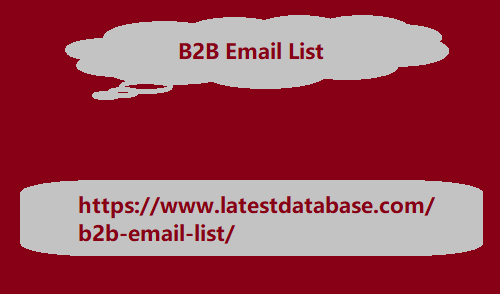Post by account_disabled on Jan 22, 2024 4:51:41 GMT
The development of e-commerce is changing approaches to working with clients and expanding business opportunities. Only one thing does not change: customers still do not want to wait long for their order. Buyers are willing to pay for fast service, and amid fierce competition, it is impossible to ignore the factor of speedy delivery. E-commerce logistics allows you to not only speed up and simplify the last mile delivery process, but also reduce its cost. What does a modern supply chain look like? Just 30-40 years ago, logistics processes looked much simpler. There was a seller who had an actual sales address and a buyer who came to the address, paid for the goods and picked them up.Development of e-commerceeverything changed. Now the seller does not always deliver the goods himself; third-party companies take care of this. A modern logistics chain consists of many links: Manufacturers . They are not always the final sellers; they can work with a large number of stores offering their products. At the same time, they participate in the logistics chain; after ordering, they send the order to distribution centers or directly to customers. Fulfillment centers . These are large warehouses in which cargo is sent to the end consumer.
The store can use the fulfillment center service and delegate the tasks of picking, storing, packing and shipping cargo. Distribution centers . It is very popular in the USA due to its large territory. Stores use the services of distribution centers, thanks to which they can offer their goods in any region. Suitable for businesses that want to expand their sales geography. Sorting objects . Used by large on B2B Email List line stores to work with wholesale quantities of goods. Carriers . Companies that deliver cargo from a manufacturer or seller to a distribution center or end consumer. The e-commerce shipping chain is now much more complex than it was 40 years ago. But at the same time it opens up new business opportunities. If previously the seller could not offer goods outside the threshold of his store, today he is practically unlimited. Finding a suitable intermediary for fast delivery of goods to the client Why is fast delivery important?

The client does not want to wait, he wants to receive his goods here and now. Many stores organize the fastest possible delivery. Experience shows that customers are willing to pay more if the goods are delivered within one day. E-commerce and logistics are integral parts of business processes. Delegation is one of the best solutions, especially if the company does not have its own warehouse, personnel and transport. Online stores can rely on logistics agencies, but the intermediary for business processes should be chosen very carefully. Is there a difference between regular logistics and e-commerce logistics? There is a difference, and a very significant one. Here are some examples: Online stores have a larger sales geography, while regular companies work with wholesale buyers. Regular companies can send goods in bulk, while orders from online stores are predominantly retail. Therefore, logistics in e-commerce differs significantly. Regular stores are focused on pickup of goods, or organize delivery under certain conditions. E-commerce often delivers to the post office or home. Logistics organization processes differ significantly. Therefore, you cannot use an established system for delivering cargo to the end consumer if the store decides to digitalize and master the D2C model.
The store can use the fulfillment center service and delegate the tasks of picking, storing, packing and shipping cargo. Distribution centers . It is very popular in the USA due to its large territory. Stores use the services of distribution centers, thanks to which they can offer their goods in any region. Suitable for businesses that want to expand their sales geography. Sorting objects . Used by large on B2B Email List line stores to work with wholesale quantities of goods. Carriers . Companies that deliver cargo from a manufacturer or seller to a distribution center or end consumer. The e-commerce shipping chain is now much more complex than it was 40 years ago. But at the same time it opens up new business opportunities. If previously the seller could not offer goods outside the threshold of his store, today he is practically unlimited. Finding a suitable intermediary for fast delivery of goods to the client Why is fast delivery important?

The client does not want to wait, he wants to receive his goods here and now. Many stores organize the fastest possible delivery. Experience shows that customers are willing to pay more if the goods are delivered within one day. E-commerce and logistics are integral parts of business processes. Delegation is one of the best solutions, especially if the company does not have its own warehouse, personnel and transport. Online stores can rely on logistics agencies, but the intermediary for business processes should be chosen very carefully. Is there a difference between regular logistics and e-commerce logistics? There is a difference, and a very significant one. Here are some examples: Online stores have a larger sales geography, while regular companies work with wholesale buyers. Regular companies can send goods in bulk, while orders from online stores are predominantly retail. Therefore, logistics in e-commerce differs significantly. Regular stores are focused on pickup of goods, or organize delivery under certain conditions. E-commerce often delivers to the post office or home. Logistics organization processes differ significantly. Therefore, you cannot use an established system for delivering cargo to the end consumer if the store decides to digitalize and master the D2C model.


